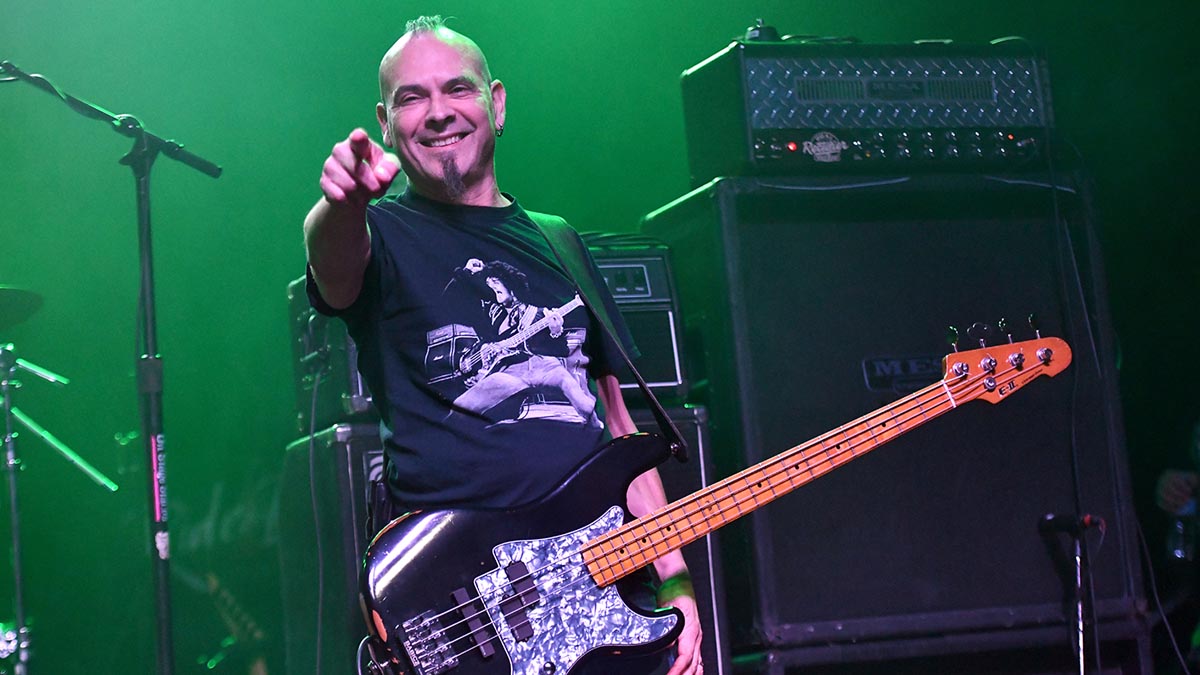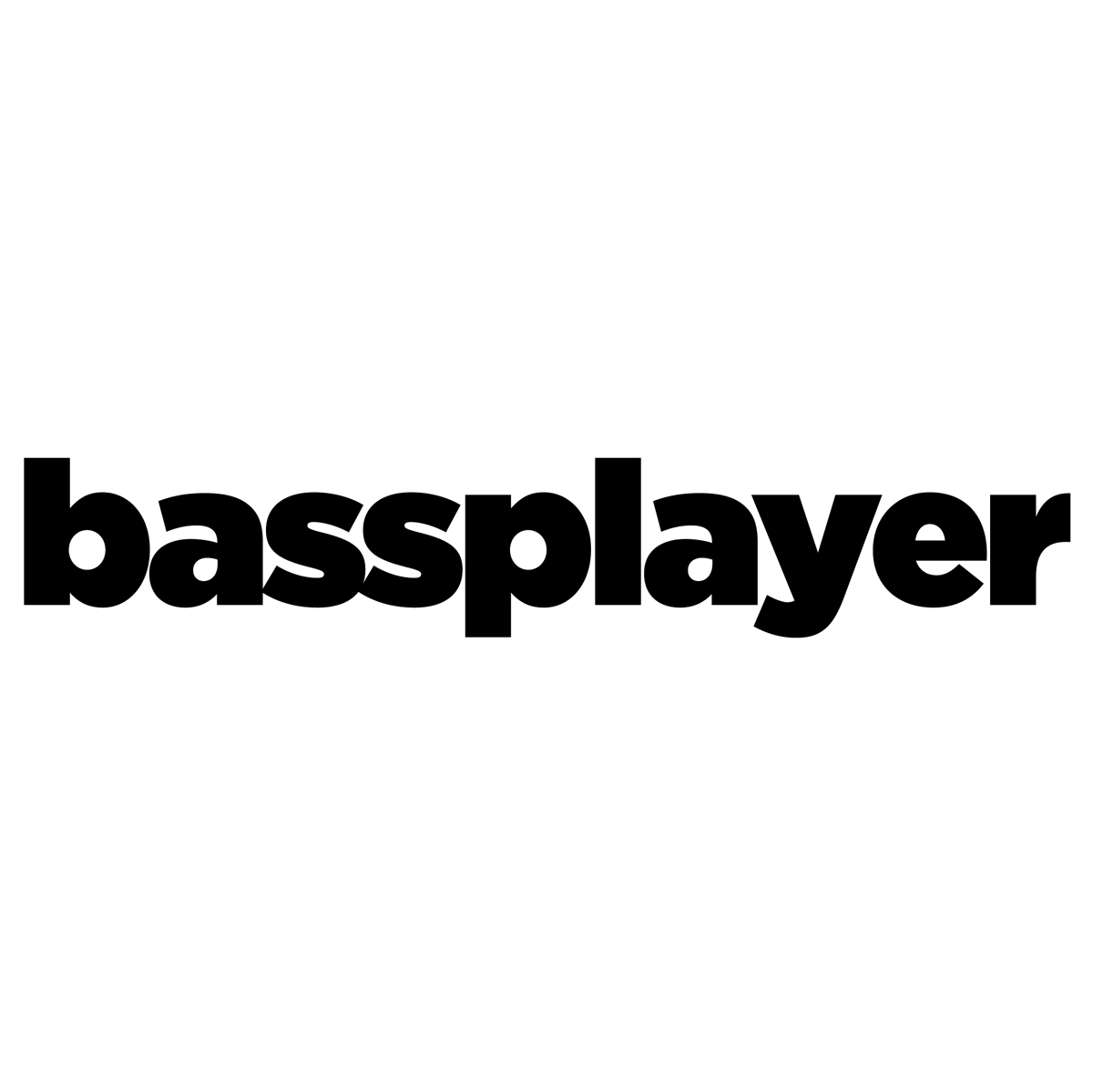Armored Saint's Joey Vera: ”I heard Kiss’s Alive! and that was about it for me. I just wanted to play an instrument”
The Californian metal stalwarts' bassist talks influences, playing styles, and how rescuing a P-Bass from under John Bush's bed got him started

Veteran headbangers Armored Saint return with a new album, Punching The Sky, on which Joey Vera produces as well as playing bass guitar. Could you multitask as well as he does?
If you’re the songwriter, the producer, and the bass player, is the bass playing the least important part of that equation?
”That’s an interesting question. It’s true that the bass parts are the last thing that get done. I’ve already written the music, so the relationship between the bass guitar and the kick drum has been set in stone for the most part since the demo stage.
”But when I’m rebuilding the songs and recording them, I often leave the bass to the very end, because I like to know exactly where everything has fallen in terms of melodies, as well as the lead vocals and the other guitar parts and overdubs that got added. So I like to know where my spaces lie, so I can either fill them up or leave them alone.
”It’s not to say that I treat the bass parts as the bottom of the totem pole or anything. I just like to do it pragmatically in that way, so that I can give it the attention that it needs to shine. Sometimes it doesn’t need to shine, it just needs to lay in the background as the final piece in the puzzle.
How did you get the bass tones?
”This whole record was done without an amplifier. It’s all direct. There’s a clean direct and there’s a DI that is pretty colored, but it’s more like a SVT color, with a little fur on it, but it’s still punchy and has low end and some top. That was from my Sansamp.
Get The Pick Newsletter
All the latest guitar news, interviews, lessons, reviews, deals and more, direct to your inbox!
”The other DI was a Darkglass, which was super ratty and nasty. When I handed the mix off to Jay Ruston, the only thing I really told him was to make it sound dangerous, like Aerosmith. He took the bass and literally made it sound like Tom Hamilton – really clunky and dirty and nasty, like on Rocks.”
What were the basses this time?
”I used my ESP basses, mostly four-strings and a custom five-string on one song. Even the songs in drop-D, I played on the four-strings. I use DR strings and have done since around 1992: They’ve been a great support for me for many years. They’re really consistent.
”And I’ve also been with Hartke for several years now. Frank Bello from Anthrax turned me on to them. They’ve been a great asset to me, just as an amazingly clean power stage. I use the Sansamps in front as preamps a lot of times, but the power part of it is Hartke.”
One of the other guitar players in the group said, ‘Hey, Joey, why don’t you try playing John’s bass? It’s under his bed’. I thought, how hard could it be? It’s only got four strings
How did you get started on bass?
”I heard Kiss’s Alive! and that was about it for me. I just wanted to play an instrument from that point, so I started learning to play guitar in 1977 or ’78. I only played the guitar for maybe a year and a half, two years, and then we were forming a group with my friends.
”John Bush was one of them, and at the time, John wanted to be a lead singer who played bass – he was gonna go for the Geddy Lee thing – so his mom bought him a 1972 sunburst Fender Precision. He played it for literally about five days, and then he decided that it was just not jiving with him, and he stuck it under his bed.
”It stayed there for six months, and during that time we were forming a group and we needed somebody to play bass. One of the other guitar players in the group said, ‘Hey, Joey, why don’t you try playing John’s bass? It’s under his bed.’ I thought, how hard could it be? It’s only got four strings. So I said ‘I’ll give it a shot’ and took his bass home.”
And the rest was history?
”Yes, because it totally connected with me immediately. When I first picked it up, I played with a pick, probably for the first six months or so, because I had already played guitar. I was familiar with the movement and the way it felt. But then I switched to fingers, and I excelled at it right away.
”I started to hear notes and chords. I didn’t know what it meant, but I started to understand the movement in the bass between the melodies and stuff. That’s really the nucleus of when it all started. This was when I was in the ninth grade going to 10th grade, so I was probably 15 years old.”
When it first started, it was pretty much all about Geezer Butler, just because I grew up listening to music in the '70s. Blues-based rock players were really what it was all about for me
Which bass players influenced you?
”Well, for me, when it first started, it was pretty much all about Geezer Butler, just because I grew up listening to music in the '70s. Blues-based rock players were really what it was all about for me, and it still is all about that type of playing, because it connected with me. So it was Geezer Butler, John Paul Jones, John Entwistle, and I was also listening to Queen, so John Deacon too, although I could never really play like him.
”I loved him because he was very melodic, a lot like Paul McCartney, and I was a huge Beatles fan as a kid. It all started to blossom out after that. I began listening to R&B at the same time, so I was really into Earth, Wind And Fire and Sly Stone. Verdine White was huge for me, and Larry Graham and Louis Johnson.”
A lot of metal bass players reference the jazz and funk players of the Seventies as influential, as well as the obvious heavy rock bassists. That seems to be a combination that really works.
”It does for me, you know. When I discovered Jaco Pastorius, the lid got blown off all of that, especially when I heard his first solo record. You could take all those people and, like you said, make a mish-mash of influences that would last a lifetime.
For me, it was always important to listen to a lot of different music. I think that influenced the way that I approach bass playing, and songwriting
”I need to mention Steve Harris, too, because by the time I got to Iron Maiden, I had been playing bass for a while, maybe five years or so. When Steve came along, of course, I was influenced by him. I couldn’t help but gravitate towards those galloped triplet bass parts, like everybody else.
”I tried to use it in a really sparse way and not overdo it, because I still had these other guys in my back pocket—you know, Larry Graham and the rest—so I tried to incorporate everything. And then a little bit later, I got into Geddy Lee. I was always into Rush, but I never really gravitated towards Geddy’s actual fingers and his playing until I was a little bit older.
”He was a huge influence on me too, because he’s actually quite funky as well. It took me a while to really see that, because he comes from that blues area, too, because he’s a Jack Bruce guy. I mean, the list could go on. Really, it could.”
That’s a long list of great bassists.
”Definitely. For me, it was always important to listen to a lot of different music. I think that influenced the way that I approach bass playing, and songwriting, and everything else about music. It was really important for me to embrace that. It was never just one person, because I was never a guy who just does one thing all the time. I always liked variety.”
- Armored Saint's Punching The Sky is out now via Metal Blade.
Bass Player is the world’s most comprehensive, trusted and insightful bass publication for passionate bassists and active musicians of all ages. Whatever your ability, BP has the interviews, reviews and lessons that will make you a better bass player. We go behind the scenes with bass manufacturers, ask a stellar crew of bass players for their advice, and bring you insights into pretty much every style of bass playing that exists, from reggae to jazz to metal and beyond. The gear we review ranges from the affordable to the upmarket and we maximise the opportunity to evolve our playing with the best teachers on the planet.
“I asked him to get me four bass strings because I only had a $29 guitar from Sears”: Bootsy Collins is one of the all-time bass greats, but he started out on guitar. Here’s the sole reason why he switched
“I got that bass for $50 off this coke dealer. I don’t know what Jaco did to it, but he totally messed up the insides!” How Cro-Mags’ Harley Flanagan went from buying a Jaco Pastorius bass on the street to fronting one of hardcore’s most influential bands











